1) Politics
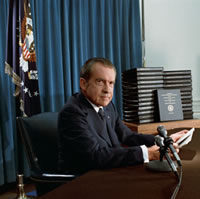
Richard Nixon
Richard Nixon was the 37th President of the United States and served from 1969 to 1974. He was the only U.S. president to resign from the office. He had many successes as well such as signing the Public Health Cigarette Smoking Act, banning cigarette ads on television, ending the American involvement in the Vietnam war in 1973, bringing American POW’s home, ending the military draft, visiting China and opening up diplomatic relations there and initiating détente and the Anti-Ballistic missile treaty with the Soviet Union. He dealt with the 1973 Arab oil embargo, gasoline rationing and finally the Watergate scandal. The scandal would cost Nixon a majority of his political support. On August 9, 1974, he resigned in the face of almost certain impeachment.

Cambodian Campaign
The Cambodian Campaign was a series of military operations conducted in eastern Cambodia during 1970 by the United States and South Vietnam during the Vietnam War. These invasions were controversial and heavily protested back home.

Henry Kissinger
Kissinger was a diplomat and political scientist. He assisted in negotiating the ceasefire in Vietnam (though never realized), and also Kissinger received the 1973 Nobel Peace Prize Nobel under controversial circumstances, with two members of the committee resigning in protest. After his term, his advice has been sought by world leaders including subsequent U.S. presidents. He played a prominent role in U.S. foreign policy during the 70’s including helping to pioneer the policy of détente with the Soviet Union, orchestrating the opening of relations with China and negotiating the Paris Peace accords. General opinion of Henry Kissinger is divided. Several scholars have ranked Kissinger as the most effective U.S. Secretary of State since 1965 while some activists and human rights lawyers have condemned him as a war criminal.

Watergate Scandal
Watergate was a major political scandal in the 1970s, following a break-in at the Democratic National Committee (DNC) headquarters at the Watergate office complex in Washington. Even more controversial was the fact that Nixon’s administration attempted to cover up their involvement. When the conspiracy was discovered and investigated by Congress, the Nixon administration’s resistance to its probes led to a constitutional crisis. The term Watergate has come to encompass an array of clandestine and often illegal activities undertaken by members of the Nixon administration. Those activities included bugging the offices of political opponents and people of whom Nixon or his officials were suspicious. Nixon and his close aides ordered harassment of activist groups and political figures, using the FBI, CIA and IRS. The scandal led to the discovery of multiple abuses of power by the Nixon administration. The affair began with the arrest of five men for breaking and entering into the DNC headquarters at the Watergate complex on Saturday, June 17, 1972. After a protracted series of bitter court battles, the Supreme Court unanimously ruled that the president was obligated to release the tapes to government investigators, and he eventually complied. These audio recordings implicated the president, revealing he had attempted to cover up activities that took place after the break-in and to use federal officials to deflect the investigation. Nixon resigned the presidency on August 9, 1974. On September 8, 1974, his successor, Gerald Ford, would pardon him.

Gerald Ford
Ford served as the 38th President of the United States from 1974 to 1977. Prior to this he was the 40th Vice President of the United States serving from 1973 until President Richard Nixon’s resignation in 1974. As President, Ford signed the Helsinki Accords, marking a move toward détente in the Cold War. Domestically, Ford presided over the worst economy in the four decades since the Great Depression, with growing inflation and a recession during his tenure. One of his more controversial acts was to grant a presidential pardon to President Richard Nixon for his role in the Watergate scandal. During Ford’s presidency, foreign policy was characterized in procedural terms by the increased role Congress began to play, and by the corresponding curb on the powers of the President. In the GOP presidential primary campaign of 1976, Ford defeated then-former California Governor Ronald Reagan for the Republican nomination. He narrowly lost the presidential election to the Democratic challenger, then-former Georgia Governor Jimmy Carter, on November 2.

Fall of Saigon
The Fall of Saigon was the capture of Saigon, the capital of South Vietnam, by the People’s Army of Vietnam and the National Liberation Front of South Vietnam (also known as the Việt Cộng) on April 30, 1975. The event marked the end of the Vietnam War and the start of a transition period to the formal reunification of Vietnam under the Socialist Republic.

Jimmy Carter
Jimmy Carter was the 39th President of the United States from 1977 to 1981. Carter, a Democrat raised in rural Georgia, was a peanut farmer who served two terms as a Georgia State Senator. He was elected President in 1976, defeating incumbent President Gerald Ford in a relatively close election; the Electoral College margin of 57 votes was the closest at that time since 1916. On his second day in office, Carter pardoned all evaders of the Vietnam War drafts. During Carter’s term as President, two new cabinet-level departments, the Department of Energy and the Department of Education were established. He established a national energy policy that included conservation, price control, and new technology. In foreign affairs, Carter pursued the Camp David Accords, the Panama Canal Treaties, the second round of Strategic Arms Limitation Talks (SALT II), and the return of the Panama Canal Zone to Panama. On the economic front he confronted persistent “stagflation”, a combination of high inflation, high unemployment and slow growth. The end of his presidential tenure was marked by the 1979–1981 Iran hostage crisis, the 1979 energy crisis, the Three Mile Island nuclear accident, and the Soviet invasion of Afghanistan.

Camp David Accords
The Camp David Accords were signed by Egyptian President Anwar El Sadat and Israeli Prime Minister Menachem Begin on September 17, 1978, following twelve days of secret negotiations at Camp David. The signing was witnessed by President Jimmy Carter.

Margaret Thatcher
On May, 4, 1979, Margaret Thatcher became Britain’s first female prime minister, ending the rule of James Callaghan Labour government.

Iran Hostage Crisis
This hostage situation developed due to a diplomatic crisis between Iran and the United States. 52 American diplomats and citizens were held hostage for 444 days, from November 4, 1979, to January 20, 1981, after a group of Iranian students belonging to the Muslim Student Followers of the Imam’s Line, who supported the Iranian Revolution, took over the U.S. Embassy in Tehran.
President Jimmy Carter called the hostages “victims of terrorism and anarchy” and said, “The United States will not yield to blackmail.” In Iran, it was widely seen as a blow against the United States and its influence in Iran, including its perceived attempts to undermine the Iranian Revolution and its longstanding support of the recently overthrown Shah of Iran, Mohammad Reza Pahlavi, who had led an autocratic regime.
After his overthrow in 1979, the Shah Mohammad Reza Pahlavi was purportedly admitted to the United States for cancer treatment. Iran demanded that he be returned to stand trial for crimes he was accused of committing during his reign. Specifically, Pahlavi was accused of committing crimes against Iranian citizens with the help of his secret police, the SAVAK. Iranians saw the decision to grant him asylum as American complicity in those atrocities. The Americans saw the hostage-taking as an egregious violation of the principles of international law, which granted diplomats immunity from arrest and made diplomatic compounds inviolable.
The crisis reached a climax when, after failed efforts to negotiate the hostages’ release, the United States military attempted a rescue operation using ships that were patrolling the waters near Iran. On April 24, 1980, the attempt, known as Operation Eagle Claw, failed, resulting in the deaths of eight American servicemen and one Iranian civilian, as well as the destruction of two aircraft. Shah Pahlavi left the United States in December 1979 and was ultimately granted asylum in Egypt, where he died from complications of cancer on July 27, 1980. In September 1980, the Iraqi military invaded Iran, beginning the Iran–Iraq War. These events led the Iranian government to enter negotiations with the U.S., with Algeria acting as a mediator. The hostages were formally released into United States custody the day after the signing of the Algiers Accords, just minutes after the new American president, Ronald Reagan, was sworn into office.
The crisis is considered a pivotal episode in the history of Iran–United States relations. Political analysts cite it as a major factor in the trajectory of Jimmy Carter’s presidency and his loss in the 1980 presidential election. In Iran, the crisis strengthened the prestige of Ayatollah Ruhollah Khomeini and the political power of theocrats who opposed any normalization of relations with the West. The crisis also led to the United States’ economic sanctions against Iran, further weakening ties between the two countries.
2) Major Events

Elton John
Elton John’s songs such as: Your Song, Don’t Let the Sun Go Down on Me, Daniel, Levon, Crocodile Rock, Bennie and the Jets, Philadelphia Freedom, Goodbye Yellow Brick Road, Tiny Dancer, Someone Save My Life Tonight, Don’t Go Breaking my Heart (with Kiki Dee), and much more topped the charts through much of the 70’s.

Apollo 13
Apollo 13 was the seventh manned mission in the Apollo space program and the third intended to land on the moon. It was launched April 11, 1970 from Kennedy Space Center in Florida. The lunar landing was aborted after an oxygen tank exploded two days later. Despite great hardship caused by limited power, loss of cabin heat, shortage of potable water, and the critical need to make repairs to the carbon dioxide removal system, the crew returned safely to earth on April 17.

Earth Day
Earth Day was first celebrated in the U.S. on April 22, 1970. It is now celebrated worldwide in an effort demonstrate support for environmental protection.

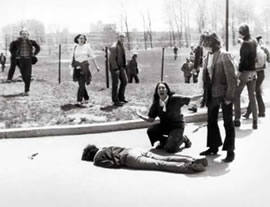
Kent State Shooting
This shooting occurred at Kent State University in Kent, Ohio and involved the shooting of unarmed college students by the Ohio National Guard. It happened on Monday, May 4, 1970. There were 28 guards who admitted to firing on top of the hill. 25 of these guards fired 55 rounds into the air and into the ground, 2 of the guards fired .45cal pistol shots, 2 into the crowd, and 3 into the air, one guard fired birdshot into the air (Russell was also hit with a shotgun’s birdshot, some believe that some of the shot may have ricocheted off of a tree and hit him). The guardsmen fired 61 rounds over a period of 13 seconds, killing four students and wounding nine others, one of whom suffered permanent paralysis. Some of the students who were shot had been protesting the Cambodian Campaign other students who were shot had been walking nearby or observing the protest from a distance. There was a significant national response to the shootings: hundreds of universities, colleges, and high schools closed throughout the United States due to a student strike of four million students, and the event further affected public opinion over the role of the United States in the Vietnam War.

The Death of Jimi Hendrix
On September, 17, 1970, Jimi Hendrix died from barbiturate overdose at the age of 27.

The Death of Janis Joplin
October, 4, 1970, Janis Joplin died from heroin overdose at the age of 27.

Apollo 14
This was the eighth manned mission in the United States Apollo program and the third to land on the moon. Two of the crew, Shepard and Mitchell, spent 33½ hours on the Moon, with almost 9½ hours of EVA.

Evel Knievel
This stunt performer and entertainer was an American legend in the 70’s. Over his career, he attempted over 75 ramp to ramp motorcycle jumps and, in 1974, a canyon jump across Snake River Canyon, which failed.

Fight of the Century/Ali and Frazier
On July, 3, 1971, Boxer Joe Frazier would defeat Muhammad Ali at Madison Square Garden in what would later be called the, “Fight of the Century”.

The Death of Jim Morrison
On July 3, 1971, Jim Morrison, lead singer of The Doors, was found dead in Paris, France at the age of 27 from an accidental heroin overdose.

World Trade Center
On April 3, 1973, The World Trade Center officially opens in New York City.

Patty Hearst
Patty Hearst was the granddaughter of American publishing magnate William Randolph Hearst. She became nationally known for events following her kidnapping. In 1974, while she was a 19-year-old student living in Berkeley, California, Hearst was abducted by a left-wing terrorist group known as the Symbionese Liberation Army. After being isolated and threatened with death, she became supportive of their cause, making propaganda announcements for them and taking part in illegal activities. Hearst was found 19 months after her kidnapping, by which time she was a fugitive wanted for serious crimes. She was held in custody, despite speculation that her family’s resources would prevent her spending time in jail. At her trial, the prosecution made Hearst’s character and sexual morality an issue, suggesting that she had not been raped while being held prisoner by the SLA. She was found guilty of bank robbery. Her conviction and long prison sentence were widely seen as unjust, but the procedural correctness of her trial was upheld by the courts. Hearst’s sentence was commuted by President Jimmy Carter, and she was pardoned by President Bill Clinton.

Pet Rock
This collectible/toy was conceived in 1975, by advertising executive Gary Dahl and was an instant hit with children and adults alike.

Mood Ring
Is a ring that contains a thermochromic element, such as liquid crystal, that changes colors based upon the temperature of the finger of the wearer. Most new rings come with a color chart indicating the supposed mood of the wearer based upon the colors indicated on the ring.
The mood ring was created in 1975 by two New York inventors, Josh Reynolds and Maris Ambats, who bonded liquid crystals with quartz stones set into rings. They initially retailed for $45 for a “silvery setting” and $250 for gold, and first sold at Bonwit Teller, rapidly becoming a fad in the 1970s.
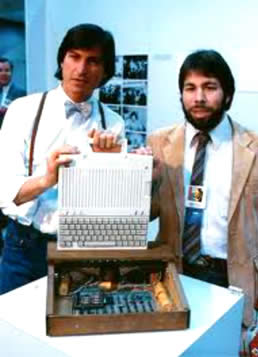
Apple Computer
April 1, 1976, Apple Computer Company is formed by Steve Jobs and Steve Wozniak.


Elvis Presley Dies
August 16, 1977, Elvis Presley, the “king of rock and roll”, dies in his home in Graceland of a heart attack at age 42. 75,000 fans line the streets of Memphis for his funeral.

Pope John Paul II
October 16, 1978, Pope John Paul II succeeded Pope John Paul I as the 264th pope, resulting in the first Year of Three Popes since 1605. He is the first Polish pope in history, and the first non-Italian pope since Pope Adrian VI (1522–1523).

Mother Teresa
In 1979, Mother Teresa was awarded the Nobel Peace Prize, “for work undertaken in the struggle to overcome poverty and distress, which also constitutes a threat to peace.”
3) Music

Beatles, Let it Be
Let It Be is the 12th and final studio album by the English rock band the Beatles. It was released on May 8, 1970, almost a month after the group broke up. The album was conceived as Get Back, a return to the Beatles’ earlier, less complicated approach to music.

Beatles break up
One of the most popular and influential bands in history, the breakup of this band has become almost as much of a legend as the band itself or the music they created while together. The break-up itself was a cumulative process throughout 1968 to 1970, marked by rumours of a split and ambiguous comments by the Beatles themselves regarding the future of the group. There were numerous causes for the Beatles’ break-up. It was not a single event but a long transition, including the cessation of touring in 1966, and the death of their manager, Brian Epstein in 1967, meaning the Beatles were personally involved in financial and legal conflicts. Conflict arose from differences in artistic vision. Both Harrison and Starr temporarily left the group at various points during 1968–69 and all four band members had begun working on solo projects by 1970 as they all realised the likelihood the band would not regroup. Ultimately, animosity made it impossible for the group to continue working together in the years following.

American Top 40
This popular longtime radio music countdown show premiered on July 4, 1970 and featured Casey Kasem as host.

Isle of the Wight
The Isle of Wright was a festival held between August 26-31, 1970 at Afton Down in Virginia, an area on the western side of the Isle. It was the last of three consecutive music festivals to take place on the island between 1968 and 1970 and widely acknowledged as the largest musical event of its time. It was organised and promoted by local brothers, Ronnie, Ray and Bill Foulk. Political and logistical difficulties resulted in the organisers eventually realising that the festival would not make a profit and declaring it to be “a free festival”, although the majority of the audience had paid for tickets in advance and the event was filmed contemporaneously. The commercial failings of the festival ensured it was the last event of its kind on the Isle of Wight for thirty-two years.
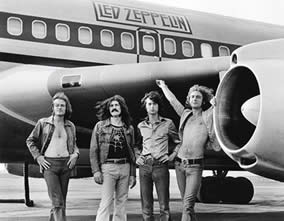

Led Zeppelin
This English rock band consisting of Jimmy Page, Robert Plant, John Paul Jones and John Bonham produced music with heavy, guitar driven sound. The music was influenced by blues and psychedelia. They would have several hits during the 1970’s. Page wrote most of Led Zeppelin’s music, particularly early in their career, while Plant generally supplied the lyrics. Jones’ keyboard-based compositions later became central to the group’s catalogue, which featured increasing experimentation. Although they remained commercially and critically successful, their output and touring schedule were limited during the late 1970s, and the group disbanded following Bonham’s death from alcohol-related asphyxia in 1980. Many have said that Led Zeppelin was to the 1970’s what the Beatles were to the 80’s.

Carole King, Tapestry
This was the second album by Carole King and was released in 1971. It is one of the best-selling albums of all time, with over 25 million copies sold worldwide.

Concert for the Bangladesh
His concert was actually two benefit concerts organized by former Beatle George Harrison and Indian sitar master Ravi Shankar. The concerts were held at 2:30 and 8:00 pm on Sunday, 1 August 1971, at Madison Square Garden in New York City. The shows were organized to raise international awareness and fund relief efforts for refugees from what is now Bangladesh. The event was the first-ever benefit concert of such a magnitude and featured Ringo Starr, Bob Dylan Eric Clapton, Billy Preston, Leon Russell and the band Badfinger. Decades later, Shankar would say of the overwhelming success of the event: “In one day, the whole world knew the name of Bangladesh. It was a fantastic occasion …”
The concerts were attended by a total of 40,000 people, and raised close to $250.000.00 US for Bangladesh relief, which was administered by UNICEF

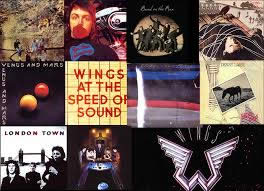
Paul McCartney/Wings
Paul McCartney and Wings formed in 1971 by former Beatle Paul McCartney and his wife Linda. Wings were noted for frequent personnel changes as well as commercial success, going through three lead guitarists and four drummers.
Created following the McCartney’s’ 1971 album Ram, the band’s first two albums, Wild Life and Red Rose Speedway were viewed as artistic disappointments beside Paul McCartney’s work with the Beatles.

Elvis’ Concerts
On June 10, 1972, Elvis began performing what would be the first of four concerts at the Madison Square Garden in New York City. He sold out all the shows in one day.

Paul Simon
An American musician, singer-songwriter and actor. Simon’s fame, influence, and commercial success began as part of the duo Simon & Garfunkel, formed in 1964 with musical partner Art Garfunkel. Simon wrote nearly all of the pair’s songs, including three that reached No. 1 on the U.S. singles charts: “The Sound of Silence” “Mrs. Robinson”, and “Bridge over Trouble Water”. The duo split up in 1970 at the height of their popularity and Simon began a successful solo career as a guitarist and singer-songwriter, recording three highly acclaimed albums over the next five years.

Bee Gees
The Bee Gees were a pop music group. Their line-up consisted of brothers Barry, Robin and Maurice Gibb. The disco era in the late 1970’s only added to their popularity.

The Eagles
The Eagles were a rock band formed in Los Angeles in 1971 by Glenn Frey, Don Henley, Bernie Leadon, and Randy Meisner. With five number-one singles, six Grammy Awards, five American Music Awards, and six number one albums, the Eagles were one of the most successful musical acts of the 1970s. The Eagles released their self-titled debut album in 1972, which spawned three top 40 singles: “Take It Easy”, “Witchy Woman”, and “Peaceful Easy Feeling”. Their next album, Desperado (1973), was less successful than the first, only reaching number 41 on the charts; neither of its singles reached the top 40. However, the album contained two of the band’s most popular tracks: “Desperado” and “Tequila Sunrise”. They released On the Border in 1974, adding guitarist Don Felder as its fifth member midway through the recording of the album. The album generated two top 40 singles: “Already Gone” and their first number one, “Best of My Love”. Their 1975 album One of These Nights included three top 10 singles: “One of These Nights”, “Lyin’ Eyes”, and “Take It to the Limit”, the first hitting the top of the charts. The Eagles continued that success and hit their commercial peak in late 1976 with the release of Hotel California, which would go on to sell more than 16 million copies in the U.S. alone and more than 32 million copies worldwide. The album yielded two number-one singles, “New Kid in Town” and “Hotel California”. They released their last studio album for nearly 28 years in 1979 with The Long Run, which spawned three top 10 singles: “Heartache Tonight”, “The Long Run”, and “I Can’t Tell You Why”, the lead single being another chart-topping hit.
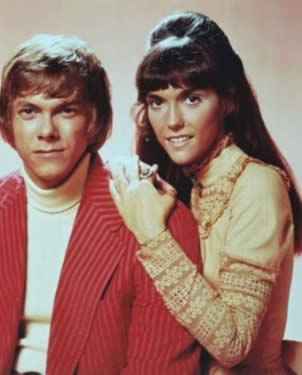
The Carpenters
The Carpenters were a vocal and instrumental duo consisting of siblings Karen and Richard Carpenter. Producing a distinctively soft musical style, they became among the best-selling music artists of all time.

Chicago
Chicago was a rock band formed in 1967 in Chicago, Illinois. The self-described “rock and roll band with horns” began as a politically charged, sometimes experimental, rock band and later moved to a predominantly softer sound, generating several hit ballads. The group had a steady stream of hits throughout the 1970s.

Barry Manilow
Barry Manilow is a singer-songwriter, arranger, musician and producer who was very popular in the 70’s. He is best known for a long string of hit recordings such as “Mandy”, “Can’t Smile Without You”, and “Copacabana (At the Copa)”.

David Bowie
David Bowie was an English singer, songwriter and actor. His career was marked by reinvention and visual presentation, his music and stagecraft significantly influencing popular music, especially in the 1970’s. Though he began performing in the late 60’s, he re-emerged in 1972 during the glam rock era with his flamboyant and androgynous alter ego Ziggy Stardust. The character was spearheaded by the success of his single “Starman” and album The Rise and Fall of Ziggy Stardust and the Spiders from Mars, which won him widespread popularity. In 1975, Bowie’s style shifted radically towards a sound he characterized as “plastic soul”, initially alienating many of his UK devotees but garnering him his first major US crossover success with the number-one single “Fame” and the album Young Americans. In 1976, Bowie began a sporadic acting career, starring in the cult film The Man Who Fell to Earth. The following year, he further confounded musical expectations with the electronic-inflected album Low(1977), the first of three collaborations with Brian Eno that would come to be known as the “Berlin Trilogy”. “Heroes” (1977) and Lodger (1979) followed; each album reached the UK top five and received lasting critical praise.
4) Television and Film

Monday Night Football
Monday Night Football premiered September 21, 1970. It debuted on ABC and featured the Cleveland Browns and New York Jets. It was hosted by Howard Cosell.

MASH film
This film was released in 1970 and is a satirical black comedy war film. It was directed by Robert Altman and written by Ring Lardner, Jr.

Patton film
This epic biographical war film was about U.S. General George Patton and set during World War II. It starred George C. Scott, Karl Malden, Michael Bates and Karl Michael Vogler.

Mary Tyler Moore show
The television sitcom was created by James L. Brooks and Allan Burns. It aired on CBS from 1970 to 1977. The program was a television breakthrough, with the first never-married, independent career woman as the central character.

All in the Family
This sitcom was broadcast on CBS, airing on January 12, 1971, to April 8, 1979. Produced by Norman Lear and Bud Yorkin, the show starred Carroll O’Connor, Jean Stapleton, Rob Reiner, and Sally Struthers. The show broke ground in its depiction of issues previously considered unsuitable for U.S. network television comedy, such as racism, homosexuality, women’s liberation, rape, religion, miscarriage, abortion, breast cancer, menopause, and impotence. Through depicting these controversial issues, the series became arguably one of television’s most influential comedic programs, as it injected the sitcom format with more realistic and topical conflicts.

The Sonny and Cher Comedy Hour
In 1971, Sonny and Cher began hosting their comedy honor on CBS. It was originally supposed to be a summer replacement series, but high ratings gave Silverman sufficient reason to bring it back later that year, with a permanent spot on the schedule. The show was scheduled to return for a fourth season in October 1974. However, Sonny and Cher separated that fall, resulting in the cancellation of the show.

Soul Train
Soul Train was a musical variety television program which aired in syndication from 1971 until 2006. In its 35-year history, the show primarily featured performances by R&B, soul and hip hop artists, although funk, jazz, disco and gospel artists also appeared.

Dick Clark’s New Year’s Rockin’ Eve
December, 31, 1972, the first New Year’s Rockin’ Eve with host Dick Clark aired on ABC with Three Dog Night as the featured act. Blood, Sweat & Tears, Helen Reddy and Al Green also performed.

MASH
This television series was based on the film of the same name. It premiered on September 17, 1972.

The Godfather film
This film was released in 1972 and was considered an American Crime film. It was directed by Francis Ford Coppola and was based on the novel by Mario Puzo. Studio executives had trouble finding a director, as their first few candidates turned down the position. They and Coppola disagreed over who would play several characters, in particular Vito and Michael. Filming was done on location and completed earlier than scheduled. The film was the highest grossing film of 1972 and would win the Oscar for Best Picture and Best Actor. It would also win Best Adapted Screenplay.

Elvis’ Hawaiian Concert
January 17, 1973, Elvis Presley’s concert in Hawaii would be the first worldwide telecast by an entertainer. It was watched by more people than watched the Apollo moon landings.

Happy Days
Set in Milwaukee, Wisconsin, the series revolves around teenager Richie Cunningham and his family: his father, Howard, who owns a hardware store; traditional homemaker and mother, Marion; younger sister Joanie; Richie’s older brother Chuck (seasons 1 & 2 only) and high school dropout, biker and suave ladies’ man Arthur “Fonzie”/”The Fonz” Fonzarelli who would eventually become Richie’s best friend and the Cunninghams’ upstairs tenant. The series’ pilot was originally shown as Love and the Television Set, (later retitled Love and the Happy Days for syndication), a one-episode teleplay on the anthology series Love, American Style aired on February 25, 1972. Happy Days spawned the hit television shows Laverne & Shirley and Mork & Mindy as well as three failures, Joanie Loves Chachi, Blansky’s Beauties (featuring Nancy Walker as Howard’s cousin), and Out of the Blue.

The Rockford Files
The show is a television drama series starring James Garner that aired on the NBC network beginning on September 13, 1974. Garner portrays Los Angeles-based private investigator.

Welcome Back Kotter
The show stars’ stand-up comedian and actor Gabriel ‘Gabe’ Kaplan as the title character, Gabe Kotter, a wisecracking teacher who returns to his alma mater, James Buchanan High School in Brooklyn, New York, to teach a remedial class of loafers, called “Sweathogs.” Befitting its low ranking, Kotter’s class is held in Room 11. The fictional James Buchanan High is based on the Brooklyn high school that Kaplan attended in real life, New Utrecht High School, which is also shown in the opening credits. Many of the show’s characters were also based on people Kaplan knew during his teen years as a remedial student, several of whom were described in one of Kaplan’s stand-up comic routines entitled “Holes and Mellow Rolls.” “Vinnie Barbarino” was inspired by Eddie Lecarri and Ray Barbarino; “Freddie ‘Boom Boom’ Washington” was inspired by Freddie “Furdy” Peyton; “Juan Epstein” was partially inspired by Epstein “The Animal;” and finally, “Arnold Horseshit” was changed to “Arnold Horshack” for network television.

Disco
This was a genre of dance music containing elements of funk, soul, pop, and salsa. It achieved popularity during the mid-1970s to the early 1980s. Its initial audiences were club-goers from the gay, African American, Italian American, Latino, and psychedelic communities in Philadelphia during the late 1960s and early 1970s. Well-known 1970s disco performers included Donna Summer, the Bee Gees, Boney M, KC and the Sunshine Band, The Trammps, Gloria Gaynor and Chic.

The Sting
This 1973 caper film was set in September 1936 and involved a complicated plot by two professional grifters (Paul Newman and Robert Redford) to con a mob boss (Robert Shaw). The story was inspired by real-life cons perpetrated by brothers Fred and Charley Gondorff and documented by David Maurer in his book The Big Con: The Story of the Confidence Man. The Sting was hugely successful at the 46th Academy Awards, being nominated for 10 Oscars and winning seven, including Best Picture, Best Director and Best Original Screenplay.

Jaws
This 1975 thriller film was directed by Steven Spielberg and based on Peter Benchley’s 1974 novel of the same name. In the story, a giant man-eating great white shark attacks beachgoers on Amity Island, a fictional New England summer resort town. The film stars Roy Scheider as police chief Martin Brody, Robert Shaw as shark hunter Quint, Richard Dreyfuss as oceanographer Matt Hooper, Murray Hamilton as Larry Vaughn, the mayor of Amity Island and Lorraine Gary as Brody’s wife, Ellen. Shot mostly on location on Martha’s Vineyard in Massachusetts, the film had a troubled production, going over budget and past schedule. As the art department’s mechanical sharks suffered many malfunctions, Spielberg decided to mostly suggest the animal’s presence, employing an ominous, minimalistic theme created by composer John Williams to indicate the shark’s impending appearances.

American Graffiti
This 1973 American coming-of-age comedy-drama film directed and co-written by George Lucas starred Richard Dreyfuss, Ron Howard, Paul Le Mat, Harrison Ford, Charles Martin Smith, Cindy Williams, Candy Clark, Mackenzie Phillips and Wolfman Jack. Suzanne Somers has a cameo. Set in Modesto, California in 1962, the film is a study of the cruising and rock and roll cultures popular among the post–World War II baby boom generation. The film is told in a series of vignettes, telling the story of a group of teenagers and their adventures over a single evening.

Donny and Marie show
This was a variety show which aired on ABC beginning January 1976 and ran until January 1979. The show starred brother-and-sister pop duo Donny and Marie Osmond. Donny had first become popular singing in a music group with his brothers, The Osmonds, and Marie was one of the youngest singers to reach #1 on the Billboard Country Music charts (with “Paper Roses”, in 1973). Donny and Marie (18 and 16 years old, respectively, when the program premiered) were the youngest entertainers in TV history to host their own variety show.

Rocky
This was a 1976 sports drama film directed by John G. Avildsen and both written by and starring Sylvester Stallone. It tells the rags to riches American Dream story of Rocky Balboa, an uneducated but kind-hearted working class Italian-American boxer working as a debt collector for a loan shark in the slums of Philadelphia. Rocky starts out as a small-time club fighter, and later gets a shot at the world heavyweight championship. The film also stars Talia Shire as Adrian, Burt Young as Adrian’s brother Paulie, Burgess Meredith as Rocky’s trainer Mickey Goldmill, and Carl Weathers as the champion, Apollo Creed.

Taxi TV show
This sitcom began airing in 1978 on NBC. The series focused on the everyday lives of a handful of New York City taxi drivers and their abusive dispatcher.

Saturday Night Fever
This dance film was released in 1977 and was directed by John Badham. It starred John Travolta as Tony Manero, a young man whose weekends are spent visiting a local Brooklyn disco. It also starred Karen Lynn Gorney as Stephanie Mangano, his dance partner and eventual friend. Donna Pescow also starred as Annette, Tony’s former dance partner and would-be girlfriend. While in the disco, Tony is the king. His care-free youth and weekend dancing help him to temporarily forget the reality of his life: a dead-end job, clashes with his unsupportive and squabbling parents, racial tensions in the local community, and his associations with a gang of macho friends.

ChiPs
This television drama series was produced by Metro-Goldwyn-Mayer (MGM) Studios that aired on NBC starting on September 15, 1977. CHiPs followed the lives of two motorcycle police officers of the California Highway Patrol (CHP). The show starred Erik Estrada as macho, rambunctious Officer Francis (“Frank”) Llewellyn “Ponch” Poncherello and Larry Wilcox as his straitlaced partner, Officer Jonathan “Jon” Baker.
